Data Science for Digital Economy and Enterprise
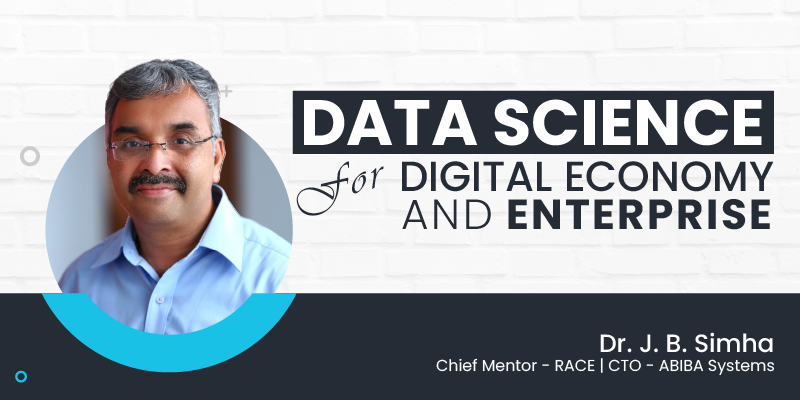
As digital transformation and digitization are happening across the industries, a huge amount of data is generated. The foundation of digital economics depends on the interrelation between business value, data, and decision-making. In this fast-processing world, organizations cannot expect to have a competitive edge over others without having data insights.
Digital technology is spreading across the entire economy of the countries. The discussion point in this blog is that how far data science is useful in this digital economy.
Digital Economy
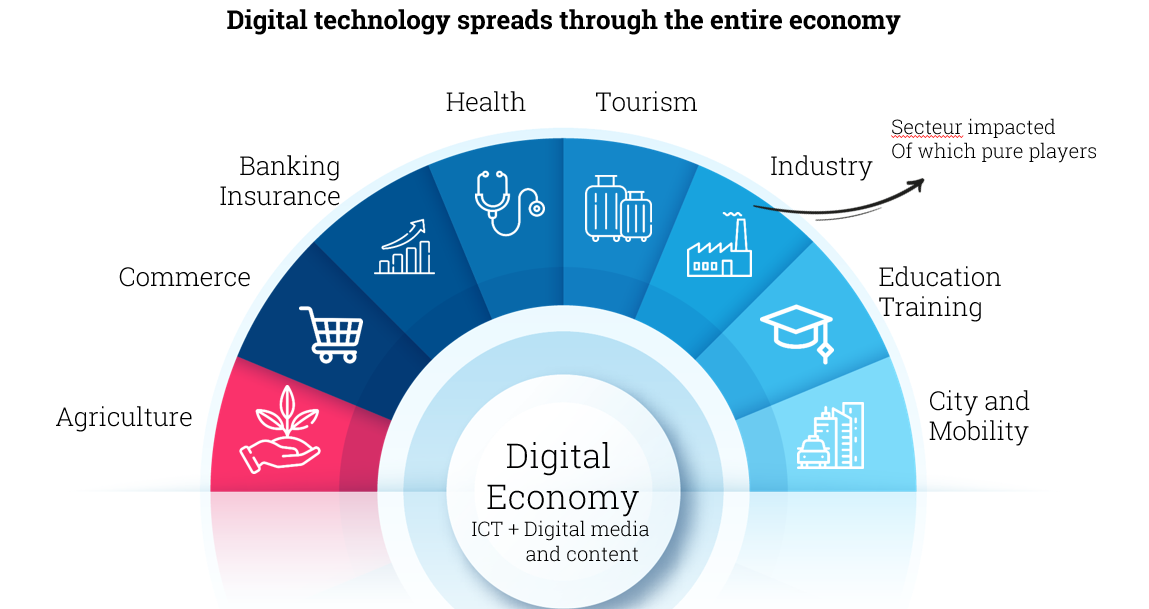
A digital economy consists of all areas of the economy that exploits the change in digital technology space and brings endless opportunities to businesses. In a digital economy, economic activities are facilitated in businesses, data, processes, and people using digital technologies.
The digital economy comprises ICT, digital media, and content that generate a huge amount of data. The digital transformation happening in various sectors such as education, banking, insurance, commerce, agriculture, health, tourism, education, etc., has an impact on the digital economy. Each of these sectors plays a major role in the digital economy as these sectors are using digital technologies for their day-to-day activities.
Today, the number of people who use smartphones is much more than people who use desktops or laptops. People can now perform many tasks using mobiles. E.g. Programming can be done using Google Colab in which the programmer doesn’t require a computer but a smartphone. Digital technologies have penetrated to everyday life to the extent that people cannot complete tasks without having them.
The moment we turn on the mobile phones, the data is available to the vendors like Google and Amazon. Is it possible to incorporate this knowledge transfer into SMEs? Big enterprises do not need this as they already have a digital infrastructure of their own.
Digital Universe
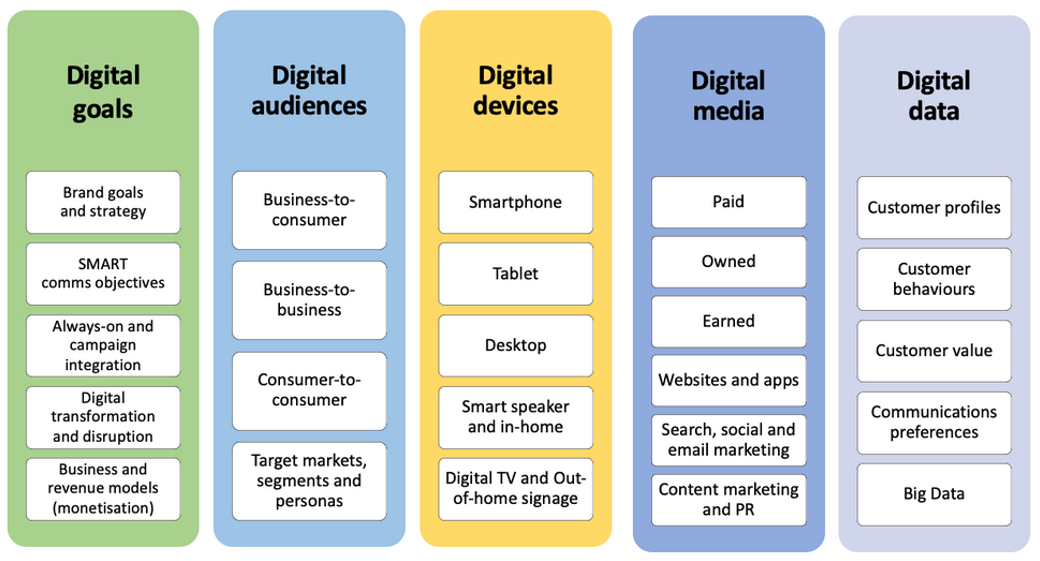
The goals of the digital economy have not changed the digital universe drastically. The digital universe consists of digital goals, digital audiences, digital devices, digital media, and digital data.
Brand goals and strategies are used to create brand visibility across the globe. Before globalization, brands were not obsessed to have digital goals because of the limited business goals. Unlike yesteryears, today, branding is the most inevitable part of various businesses as brand positioning will leverage more business to the organization. In a digital economy, the objective of the business is crucial to building the brand.
The digital audience comprises people who are the ideal customers of the brand. The digital audience includes business-to-consumer, business-to-business, consumer-to-consumer, and target market. It is essential to know about the digital audience of a business to create a business model. Smartphones, tablets, desktops, smart speakers, and digital TV are some of the digital devices that come under the digital economy.
The media used for the branding of a business are paid, owned, earned, websites and apps, web search, social media marketing, content marketing, email marketing, and PR. Any niche content related to the brand can be publicized through these media.
In a digital economy, everything revolves around digital data with which businesses can develop business models. For businesses, it is important to own data. However, digital data consists of both structured and unstructured data. With the digital data, businesses can extract the customer profiles, customer behaviors, customer value, and communication preferences to provide customized service to the customers.
Digital Analytics Architecture
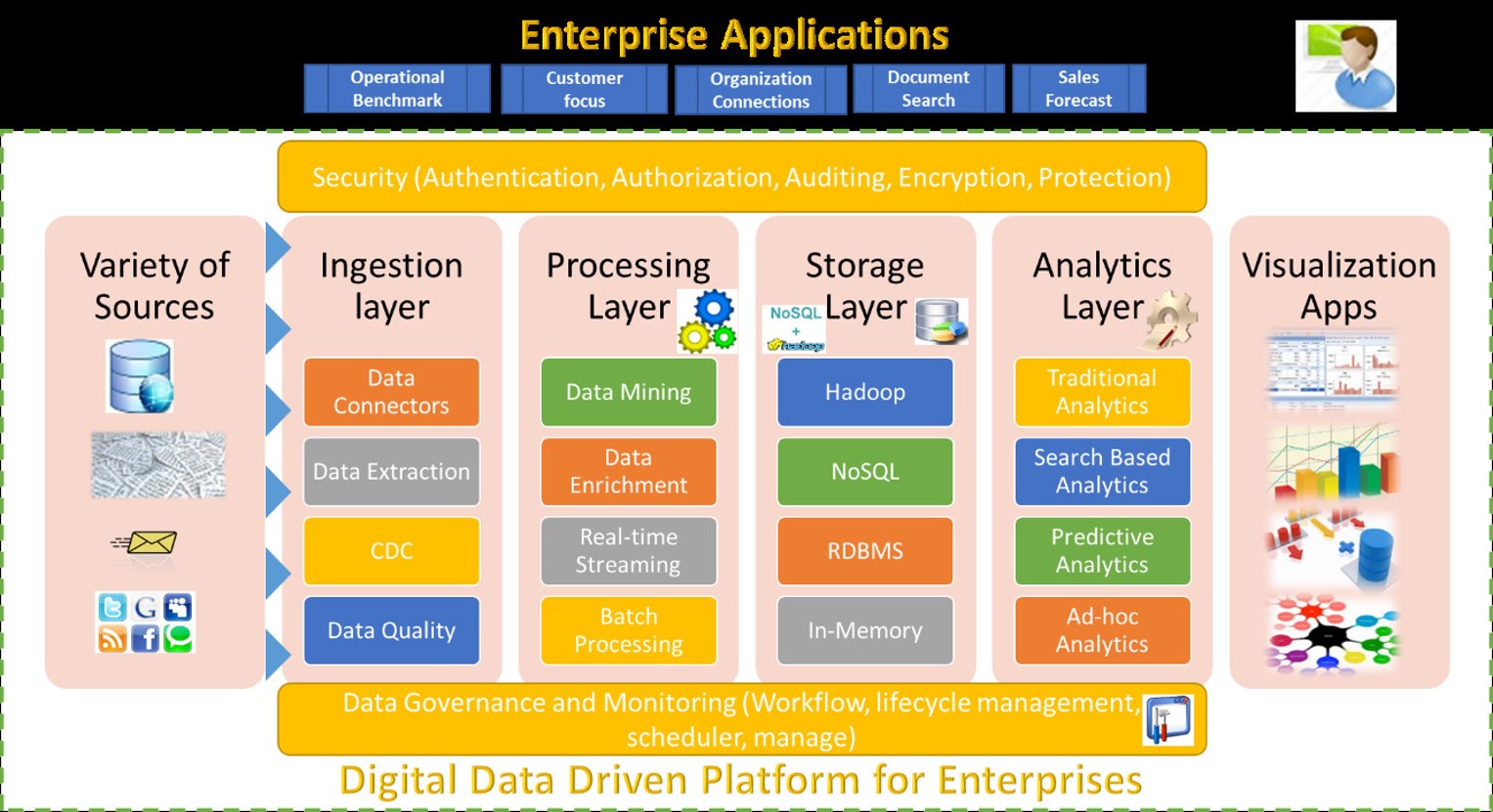
Digital analytics architecture refers to infrastructure, applications, tools, and best practices that support data analysis to enhance business performance and decisions. The digital analytics architecture helps to design a data pipeline with various requirements. The digital analytics architecture consists of different layers such as the ingestion layer, processing layer, storage layer, analytics layer, and visualization layer.
The process in the ingestion layer starts by using data from variable sources. Data ingestion is the process in which data is categorized and prioritized to support a smooth data flow to the subsequent layers.
In the processing layer, the data collected and categorized in the ingestion layer is processed. This layer will perform batch processing, hybrid processing, or real-time processing.
When there is large-sized data, data storage becomes a challenge. The storage layer uses the data ingested by the enterprise, which is taken from various sources and converts into a comprehensive format. The data will be stored in this comprehensive format.
The analytics layer reads the data stored in the storage layer. In certain cases, the analytics layer directly accesses the data from the sources. The analytics tools will extract data to create better business decisions.
The visualization layer provides user-friendly visual representations of the data-driven outcomes. Data visualization is an integral part of data analytics as it helps the end-users to identify patterns, predict data trends, and provide insights to the stakeholders.
Digital Analytics Value Evolution
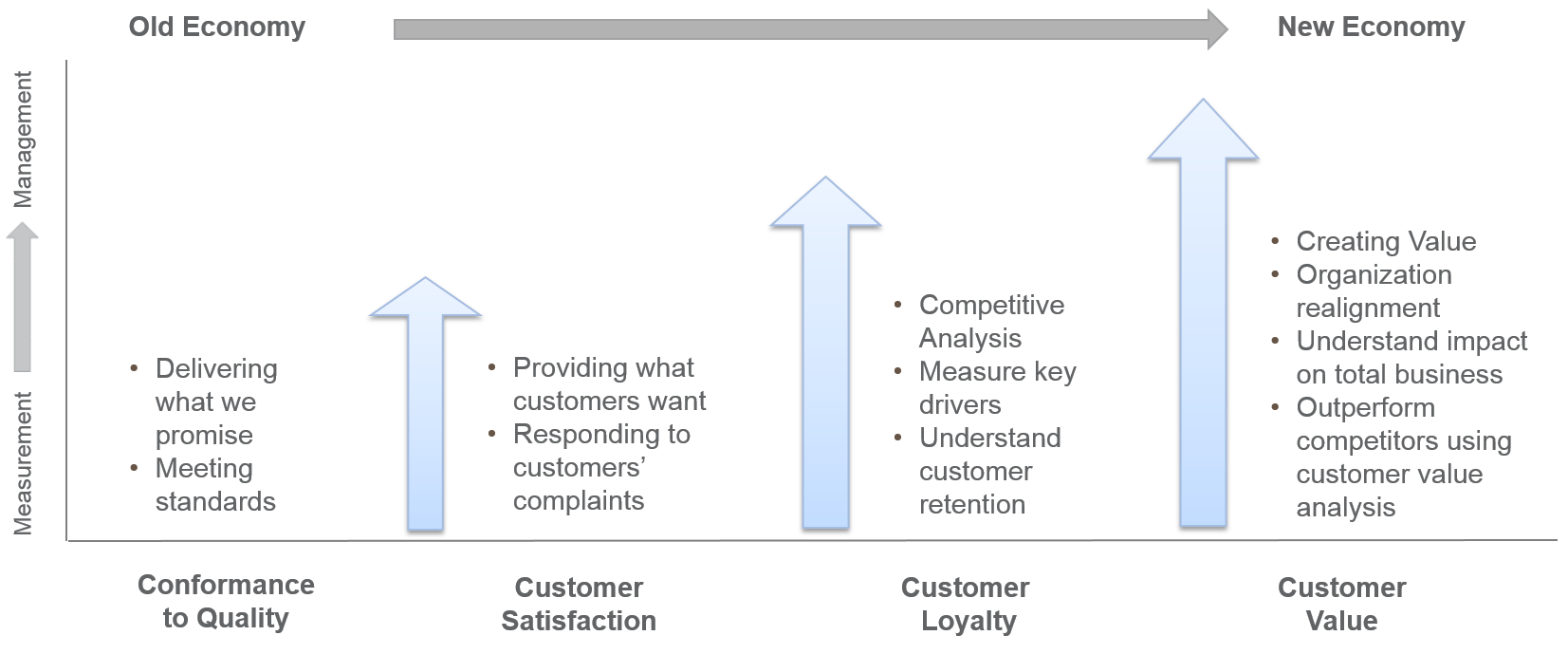
Customer experience is an important factor that has to be measured to analyze customer satisfaction, customer loyalty, and customer value. Measuring customers’ experience and analyzing the results will help to gain business insights. In the old economy, delivering what has been promised to the customers was measured as business success.
However, in a digital economy, customer loyalty and customer value are considered the most important catalysts for business success. Customer satisfaction is the key aspect of a business to achieve customer loyalty and customer value.
How to monetize customer value? To monetize customer value, it is essential to know in which areas it is applicable. It applies to any areas such as agriculture, finance, pharmaceuticals, automotive, healthcare, manufacturing, and so on.
The relevancy of digital analytics has increased in recent days. One of the major reasons for this is that marketing campaigns are using data to make an impact on businesses. Digital analytics helps businesses to know about their current position and also determine what should be done to be competitive in the market. Some of the processes involved in digital analytics are digital listening, digital acquisition, customer profiling, competitive intelligence, competitor analysis, and identifying CLTV.
Digital listening is the process in which the opinions of customers on products or services of a business will be identified and analyzed through multiple communication channels. This helps the businesses to get an honest and balanced report about their brand. Digital listening can be utilized to extract useful business insights for the brands from their marketing campaigns, competitors, industry, and customers.
Digital acquisition is a methodology of enticing and retaining new customers using various digital marketing strategies such as online resources, engagement tools, and media to create business awareness among potential customers. Data Science offers a complete picture of who the customers are, what they need, and how their behavior is. Analytics helps to receive insights on the customer needs and desires, which will support in customizing the customer experience.
Customer profiling is the process of identifying ideal customers for the business. It is a marketing tool used by businesses to understand customer behavioral, demographic, psychographic, and geographic characteristics. Customer profiling allows businesses to create a centralized customer database and receive insights to enhance the marketing strategy.
Gaining a competitive advantage over other similar businesses is intimidating than before. In this digital economy, enjoying the advantage of digital marketing is tougher than ever as businesses need to know what their competitors are doing. Why do you need to know about your competitors? If your business wants to stay one step ahead of your competitors, then it is important to know about your competitors. Competitive intelligence tools enable you to get information on the competitors’ marketing strategies such as content marketing, social media marketing, PPC, and SEO strategies.
Competitor analysis is performed to identify the strengths and weaknesses of competitors to define where your business stands in comparison with them. Competitor analysis will help to highlight the gaps in the business and provides insights on how to deal with the issues in the business.
The most important aspect of a business is to identify customer value. Customer lifetime value allows businesses to measure long-term success and predict future revenue. Customer lifetime value (CLTV) shows the expected profit from a specific client throughout the association. The formula for CLTV calculation varies from organization to organization based on the organizational goals. Different methods are available for calculating CLTV such as Historic CLTV, Predictive CLTV, Cohort Analysis, and Individualized CLTV.
Data Science in Digital Economy– The Way Forward
In this digital economy, data-driven businesses have a competitive edge over others. Hence, organizations have to invest in infusing data science for the advantage of employees and customers. The digital economy provides limitless opportunities to get connected with the customers so that organizations can innovate and build new customer experiences. Watch the video to have an in-depth understanding of Data Science for the Digital Economy and Enterprise.



